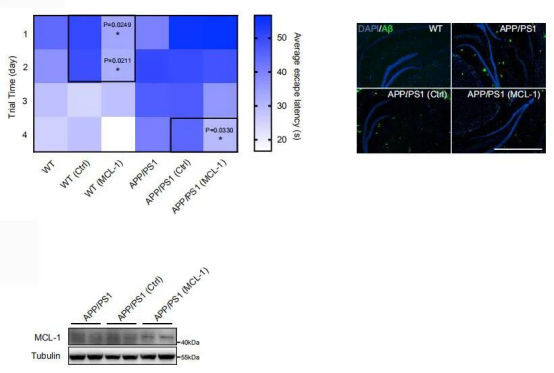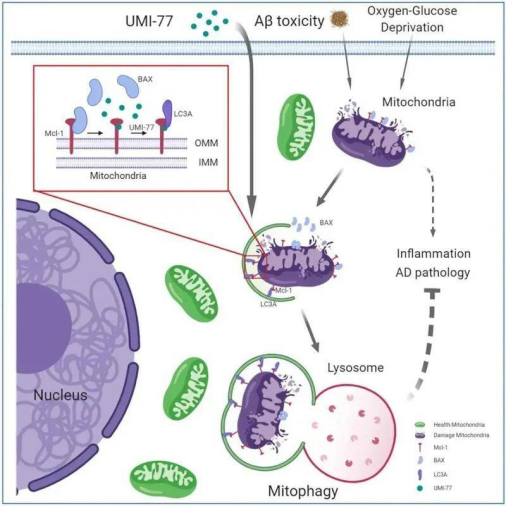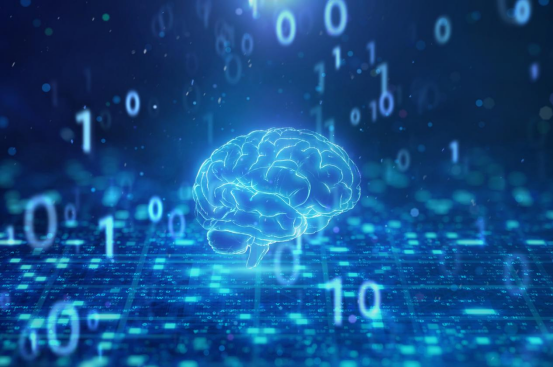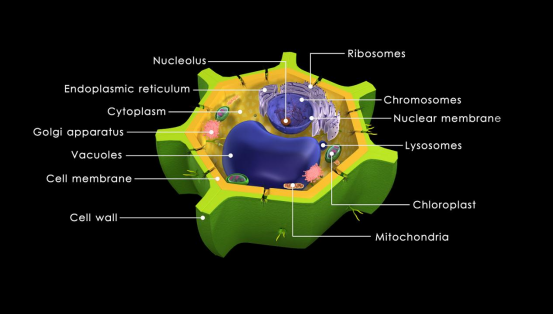全球医讯
Alzheimer's disease (AD) is a progressive neurodegenerative disease with cognitive decline as the main clinical feature. It is also a major type of senile dementia (1-3). Before AD patients develop clinical pathological symptoms such as neuronal loss and significant cognitive decline, their glucose metabolism in the hippocampus and parietal and temporal cortex of the brain is abnormal, and the oxidative phosphorylation system is damaged (4). Since energy metabolism disorders are one of the basic causes of AD, mitochondrial damage is considered to be a potential cause of AD (5). Cell apoptosis caused by mitochondrial damage is also related to many other neurodegenerative diseases, such as Huntington's disease, Parkinson's disease, and mitochondrial myopathy. Mitochondria can not only synthesize ATP, but also produce free radicals and act as a storage depot for proteins that regulate intracellular apoptotic pathways. However, the mechanism by which mitochondrial respiratory dysfunction and mitochondrial damage cause cell apoptosis and the stress signal transduction induced by them remains unclear.

Recently, a research team led by Professor Xia Hongguang from the School of Basic Medical Sciences of Zhejiang University published an important research result on Alzheimer's disease (AD) in the internationally renowned journal Nature Communications. The study, titled "Pharmacological targeting of MCL-1 promotes mitophagy and improves disease pathologies in an Alzheimer's disease mouse model", revealed a new mechanism by which the anti-apoptotic protein MCL-1 acts as a mitophagy receptor protein and improves the disease pathological characteristics of AD model mice by inducing mitophagy.
The research team found that UMI-77, a specific inhibitor of MCL-1, can significantly alleviate cognitive impairment and other pathological manifestations in AD model mice. This discovery provides a new strategy for the treatment of Alzheimer's disease, indicating that targeting MCL-1 protein to induce mitochondrial autophagy has great therapeutic potential. This research result is of great significance for a deeper understanding of the pathogenesis of Alzheimer's disease and the development of new treatments.

Schematic diagram of the mechanism of action of UMI-77
Abnormalities of mitochondrial function in Alzheimer's disease
The study found that the average volume of neuronal mitochondria in AD model rats increased and the surface area decreased, indicating that neuronal mitochondria were swollen; while the density of mitochondrial numbers decreased, revealing that the number of mitochondria decreased! Various factors in the aging process: slow metabolism, functional aging, etc., will lead to damage to MT and a decrease in number. Electron microscopy was used to observe that the number of mitochondria in old mice decreased and the volume increased significantly compared with the young group. Clear cristae were visible, and occasionally the contents were reticular, and the outer membrane was damaged, which may be related to the increase in free radicals in the mitochondria of brain cells during aging.

Mitochondrial gene mutations
There are many reasons for mitochondrial dysfunction and abnormal energy metabolism, and mitochondrial DNA (mtDNA) mutation is one of the most important factors.
After a detailed analysis of tissue samples from patients with Alzheimer's disease (AD) who died, we found that the number of point mutations in the D region of their mitochondrial DNA (mtDNA) increased significantly. These mutations may be directly involved in the damage process of mitochondrial function, promote the generation of free radicals, and increase the sensitivity of cells to apoptosis. Further research data showed that compared with the normal population, the probability of mtDNA mutation in AD patients increased significantly, especially those genes encoding cytochrome c oxidase subunits were more likely to mutate. In addition, the mRNA expression levels of cytochrome oxidase genes co and coⅡ in the temporal lobe of the brain of AD patients were only half of those in the healthy control group. It is worth noting that the mutation rate of cytochrome oxidase genes in AD patients is 32% higher than that in elderly people of the same age. About one-fifth of AD patients have defects in the cytochrome oxidase gene, which directly leads to a decrease in the activity of the enzyme in their brains. Considering that each cell contains multiple mitochondria, when the mutations in intracellular mtDNA accumulate to a certain extent, it may seriously impair the ability of mitochondria to produce ATP, thereby triggering the pathological process of AD.
Mitochondrial energy metabolism disorders, changes in Ca2+ in mitochondria, and mitochondrial and cell apoptosis are all manifestations of mitochondrial dysfunction.
Mitochondria can be quickly transported to the area of ​​neuronal biosynthesis, which is very important for the development and functional stability of synapses and dendritic spines. The number of mitochondrial transporters in AD patients was significantly reduced compared with the control group by fluorescently labeling the mitochondrial cells, indicating that the mitochondrial transport function of AD patients is reduced. Mitochondria are one of the targets for the treatment of AD. Mitochondrial dynamics and dysfunction play an important role in the pathological process of AD. If the anti-amyloid protein treatment is not effective, the therapeutic strategy to improve mitochondrial function is very important.

How to relieve...?
AD, or Alzheimer's disease, is mainly manifested by symptoms such as memory loss, confusion, and mood swings. With the aging of the population, the incidence of AD is increasing year by year, bringing a heavy burden to society and families. So, how to alleviate AD?
1. Healthy lifestyle
Maintaining a healthy lifestyle is essential to prevent AD. A balanced diet, moderate exercise, good sleep, and social activities can all reduce the risk of AD. For example, the Mediterranean diet is considered beneficial to brain health because it is rich in antioxidants and anti-inflammatory foods.
2. Exercise regularly
Regular physical exercise not only improves physical fitness, but also promotes the growth and connection of neurons, thereby helping to prevent the occurrence of AD.

3. Cognitive training
Cognitive training is also an effective way to alleviate AD. By constantly challenging the brain and training memory, attention and thinking, the brain can be kept active and flexible. For example, the memory palace method, jigsaw puzzles, math problems, etc. are all good cognitive training methods. In addition, learning new skills, participating in social activities, reading books, etc. can also stimulate brain activity and improve cognitive ability.
4. New targets, new mechanisms
In addition to lifestyle and cognitive training, drug therapy is also an important means to alleviate AD. Currently, a variety of drugs have been approved for the treatment of AD, such as acetylcholinesterase inhibitors, NMDA receptor antagonists, etc. These drugs can relieve AD symptoms by improving neurotransmitter transmission, reducing neuronal damage, etc. However, drug therapy also has certain side effects and risks, so it needs to be carried out under the guidance of a doctor.
Pay attention to K2 new drug medical information, grasp the latest developments in precision target therapy, and safeguard your health.
5. Psychological support
Psychological support is also very important for AD patients. AD patients often face challenges such as memory loss and social barriers, and are prone to emotional problems such as anxiety and depression. Therefore, family members and society should give them more care and support to help them maintain a positive attitude and optimistic mood.
A variety of measures are needed to alleviate AD, including maintaining a healthy lifestyle, cognitive training, drug therapy, and psychological support. Only by taking various factors into consideration can AD symptoms be effectively alleviated and the quality of life of patients be improved.